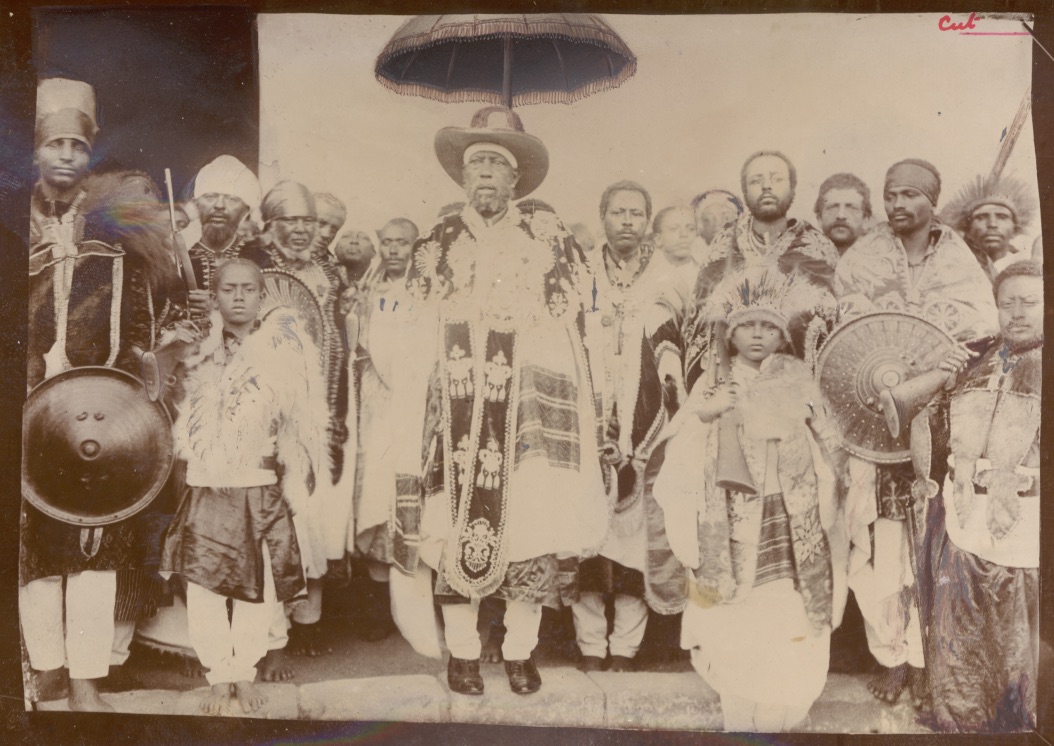Ethiopia: In Abyssinia
Africa 1909, Edward Hertslet (Map of Africa by treaty, 3rd edition)
Although most of William Ellis’s ventures outside the U.S. were focused on Mexico, in the early 1900s he inaugurated a significant involvement with Ethiopia, better known to most at the turn of the century as the kingdom of Abyssinia. Ethiopia enjoyed the distinction at the time of being the only nation in sub-Saharan Africa to have defeated a European imperialist invasion (Italy in the Battle of Adwa in 1896) and retained its independence, making the kingdom a beacon of hope for many in the African American community.
During the summer of 1902, Ellis found himself in London during the coronation of Edward VII. Somehow, he managed during his stay in England to cross paths with Ras Makonnen, one of the heroes of Adwa, who was representing the Ethiopian leader, Emperor Menelik II, at the coronation ceremony. Soon afterwards, Ellis fastened onto the idea of making a journey himself to Ethiopia—at the time such a remote locale that reaching Menelik’s capital, Addis Ababa, required a three-week long trek via camel from the African coast over hundreds of miles of forbidding desert.
If Ellis’s interest in Ethiopia was shaped in part by the prominent place that the kingdom occupied in African American thought, he also hoped to build on some of his experiences in Mexico. Like the Mexican republic, Ethiopia was in the midst of an effort to modernize under a strong leader so as to prevent possible dismemberment by outsiders. Ethiopia’s remoteness and the fact that Menelik II had come to power some fifteen years later than Díaz, however, meant that these processes were less far along in Ethiopia than in Mexico, offering Ellis the opportunity to be a key architect in Ethiopia’s transformation in a way that he could only pretend to achieve in Mexico.


During his first trip to Ethiopia, Ellis thus brought not only gifts for Emperor Menelik, but also guidelines for a new bank (to be run, of course, by Ellis) and plans to expand trade with the U.S., which at the time had no diplomatic relations with Ethiopia. Through clever timing, Ellis managed to arrange his trip to Addis Ababa only weeks before the first visit by a representative of the U.S. State Department, Robert F. Skinner. As a result, many in the U.S. came to believe that Ellis had played an official role in arranging Skinner’s trip, a misapprehension that Ellis—passing, as it were, this time as a diplomat—was happy to encourage.
This blurring of the boundary between Ellis’s private endeavors and the U.S.’s official diplomacy became even more pronounced in the following months. After Skinner negotiated a treaty of commerce with Ethiopia, Ellis lobbied the State Department to be allowed to carry the treaty back to Addis Ababa, even offering to do so at his own expense. The assistant secretary of state, Francis Loomis, however, selected his younger brother, Kent, for the honor. Ellis nonetheless managed to ingratiate himself with Kent Loomis; soon the two were staying in whites-only hotels together and contemplating adding a hunting safari onto Kent’s trip to Ethiopia, a journey that Ellis had managed to join as well.
This close relationship came to an abrupt halt in June of 1904. At the time, Ellis and Loomis were on the Kaiser Wilhelm II during the first leg of their trip to Addis Ababa. The day before the ship was to land in England, however, Loomis fell (or, some speculated, was pushed) overboard. Following Loomis’s death, Ellis continued with the treaty alone to Ethiopia.
Loomis’s mysterious demise captured the interest of newspapers across the U.S.This unexpected attention threatened to undo Ellis’s carefully crafted persona of a Mexican and/or Cuban businessman by eroding the anonymity that had allowed Ellis to obscure much of his background.The clippings here convey how Ellis’s trips to Ethiopia and his relationship to Loomis were described by newspapers from a variety of communities across the country and even by the newspaper of the American colony in Mexico City.Also available are records from the U.S. State Department relating to the treaty, which include a letter from William Ellis describing his trip to Addis Ababa.



